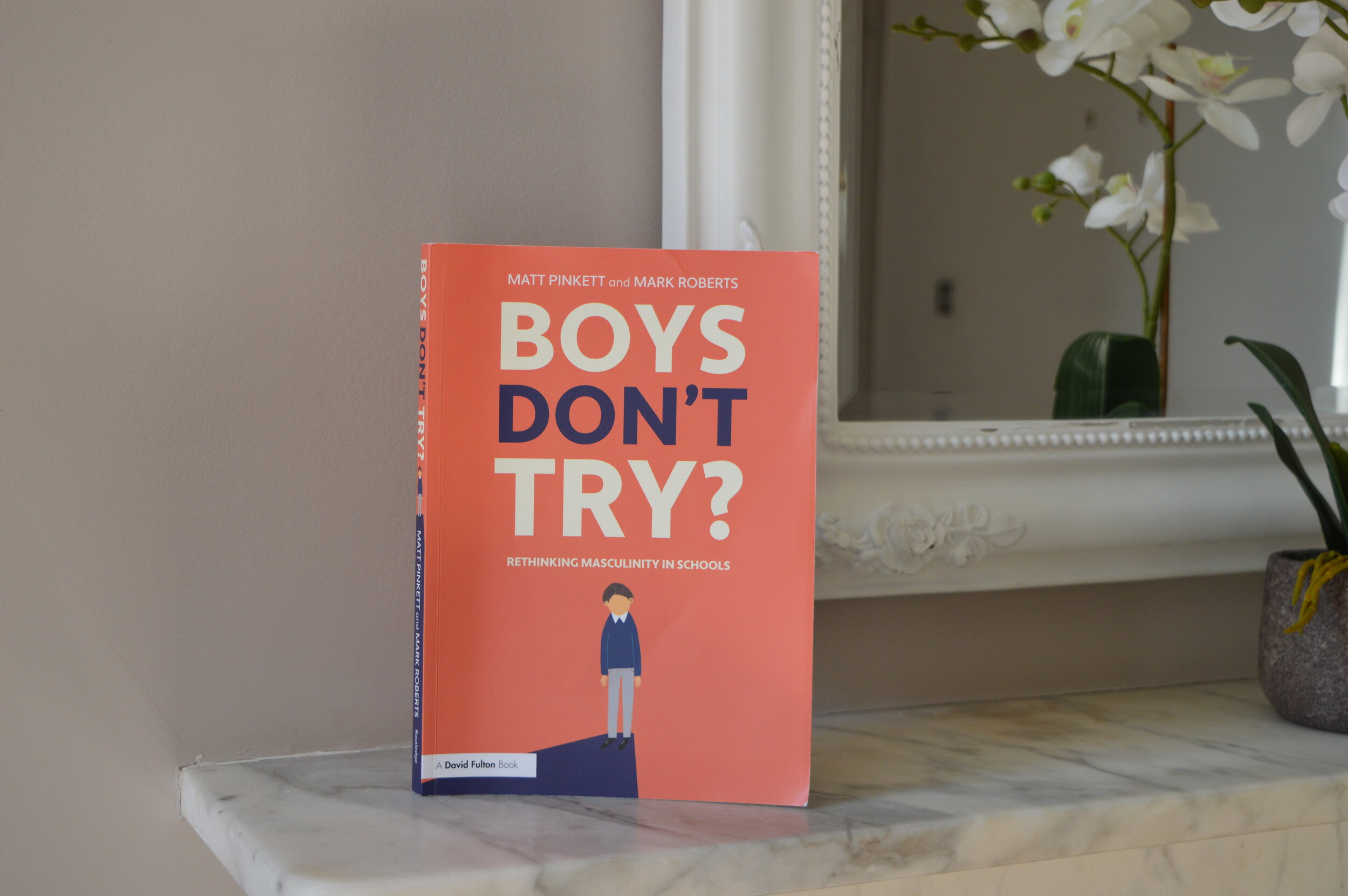Boys Don’t Try?
May 2020
Overall verdict: ★ ★ ★ ★
To buy this book, click here.
Why this book?
Despite this book’s omnipresence on Twitter, I must confess that I didn’t think I needed to read it. I joined teaching when the era of ‘wow-factor’ lessons and engagement for engagement’s sake was beginning to come to an end. I hadn’t ever used a knock-out competition to encourage the boys in my class to write more nor had I chosen boy-friendly topics to engage the boys in geography so, quite frankly, why did I need to read this? Well, how misguided that was…
Whether it’s the hard-hitting paragraph about how middle-class our entire system is (p.24) or the thought-provoking questions about our own stereotypes (p.40), this book grapples with some of the biggest issues and questions inherent in our education system today. It forces you to reflect deeply on your own classroom practice and consider the language you use, the expectations you set and the bias that you have. Pinkett and Roberts are clear in their message that in order to deal with the problems discussed it has to be a whole school (and indeed, whole society) effort. There is a risk therefore that as a classroom teacher reading this book you could be left feeling powerless and somewhat deflated in the extent to which you can make a difference. However, what the authors do so skilfully is constantly remind you of the range of scales at which action can be taken. The book ends with a reminder that your classroom is your domain; that you are capable of making seemingly small changes that will have long-lasting impacts.
This is one of those rare books that is relevant to all educators- regardless of which phase of education they work in. Whilst reading from my own perspective as a secondary geography teacher and Year 8 form tutor, I simultaneously made notes of the sections that would be of particular interest to my mum- a lecturer in EYFS. In my experience, it is rare for a book to seamlessly span the entirety of education and thus this reinforces the value of this book for all.
Three key takeaways:
1. “Teach boys in exactly the same way that you teach girls. High challenge. High expectations. No gimmicks. No shortcuts.” (p.21)
2. “Watered-down curricula ensure that boys switch off after the initial sugar rush of relevancy has subsided.” (p.17)
3. If we’re going to rethink masculinity in schools, it has to be a whole-school effort. From assemblies and rewards to the texts studied and language used by teachers, there can be no stone left unturned because, in sum, “tender masculinity is not a matter of injection but distillation” (p.196).
To buy this book, click here.
